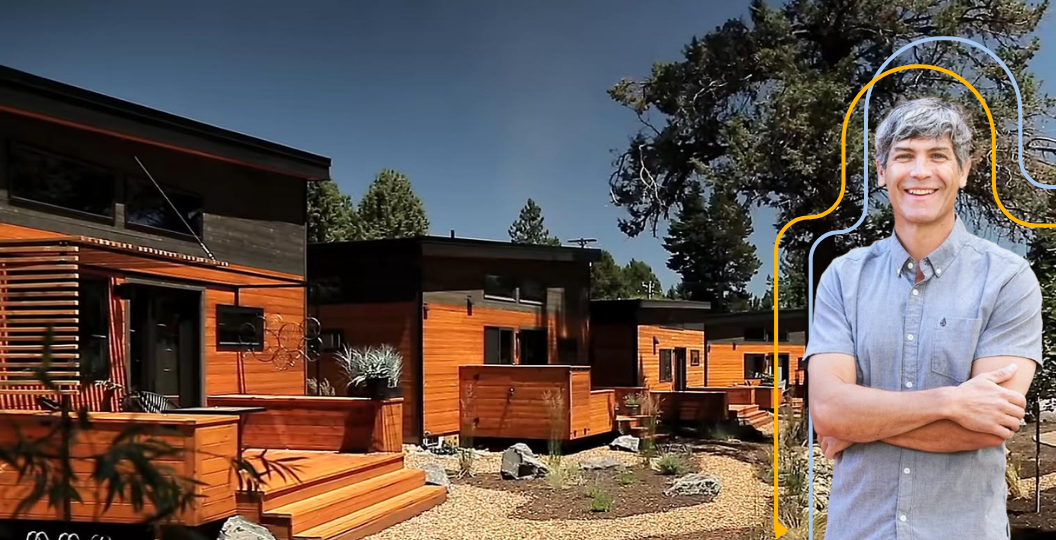“City of Yes”: New York City Mayor Proposes Major Housing Reform
New York City Mayor Eric Adams. (Source: Wikimedia Commons/Metropolitan Transportation Authority of the State of New York.)
You could start almost any article about housing policy in North America with, “x city has a housing crisis,” and the reasons would be strikingly similar. Through zoning rules such as parking minimums, single-use districts, and an emphasis on single-family homes and large multiplex apartments, many cities have stifled the types of new housing development needed to keep up with demand.
That’s exactly how New York City Mayor Eric Adams described the challenges facing the U.S.’s largest city: “For more than 60 years, we have added layers upon layers of regulations, effectively outlawing the kinds of housing that our city has long relied on.” Adams proposed a substantial set of reforms to enable incremental and missing-middle housing solutions and add 100,000 new housing units to the city.
Starting with the caveat that Adams is just one elected official in a massive city government and any housing policy changes must go through a tortuous path for political and agency approval, many of these proposals align closely with Strong Towns core campaigns. Among the most promising ideas (in the city’s words):
Ending Parking Mandates for New Housing
Across much of New York City, decades-old regulations require certain fixed numbers of parking spaces to be built alongside new homes, driving up costs and ultimately blocking housing by making many projects infeasible. These government mandates add an estimated $67,500 per underground parking space in construction costs and require valuable space to be reserved for cars instead of additional homes for New Yorkers. This proposal will eliminate requirements that new homes come with new parking spots. Parking would not be barred from new developments, but this plan would get zoning regulations out of the way so developers could make decisions consistent with the market and their potential residents.
Accessory Dwelling Units
Backyard cottages, garage conversions, and basement units have delivered enormous benefits to homeowners across the country—allowing seniors struggling to stay in their neighborhood on a fixed income or young people stretching to afford a first home a way to earn extra income. This proposal would legalize an additional dwelling unit of up to 800 square feet on one- and two-family properties across the five boroughs, adding new housing that fits into neighborhoods, while providing space for multigenerational families, health aides, or local workers.
Converting Empty Offices into Housing
Turning vacant commercial space into homes offers a win-win for New Yorkers looking for new homes and the city’s economic recovery, creating housing more efficiently in already-existing buildings, while maximizing use of otherwise underused space and enlivening neighborhoods. Today, arbitrary restrictions dictate that depending on the year a building was constructed, conversion may or may not be possible today. This proposal would update the year of construction to 1990 for flexible conversion regulations, extend geographic eligibility to anywhere in the city that zoning permits housing, and allow conversion to more types of homes, including supportive housing. Through these changes, commercial space could be converted to create an additional 20,000 homes over the next decade.
Town Center “Main Streets” Zoning
Increasingly restrictive zoning has made it illegal to construct the kinds of commercial corridors that make neighborhoods across New York City vibrant and distinct. Along these corridors, the “town centers,” or “Main Streets” of respective communities, this proposal would allow between two and four stories of residential development over ground-floor commercial space to encourage mixed-use communities and foster naturally affordable types of housing.
Shared Living
Around the world, cities have lowered housing costs by allowing modest apartments where residents share some common facilities, like kitchens and bathrooms. New York was once full of options like these, but, over time, regulations have made this kind of housing all but impossible to offer. This proposal would adjust current rules that mandate larger unit sizes, allow more smaller-sized apartments to reduce the need for single adults to live with roommates, and re-legalize homes with shared kitchen or bathroom facilities while maintaining strong building code and livability standards.
These proposals substantially reflect reforms Strong Towns advocates for. Accessory dwelling units are a proven tool to enable more small-scale housing and allow homeowners to reap economic benefits from their property. Parking minimums notoriously stifle small developers and make many incremental projects economically unviable. Commercial space on one floor with housing above is an age-old American solution that’s good for cities and property owners alike. As for converting office buildings to residential, it’s a great idea but often challenging to execute.
This plan comes in the wake of a failed effort by New York Governor Kathy Hochul to enact zoning reforms statewide. That plan, called the New York Housing Compact, would have mandated that counties expand their housing stock by 3% every three years or face state intervention, but it didn’t advance through the state legislature after opposition from representatives concerned about local control.
New York City is also attempting to address the housing shortage with its controversial new rules cracking down on Airbnbs and short-term rentals, which it hopes will return many properties to the regular rental market.
Next up in the process is for the Department of City Planning to formalize these proposals into policy. Then, “[f]ollowing consideration and recommendations by all five borough presidents, all five borough boards, and all 59 community boards, the initiative will be voted upon by the City Planning Commission and the City Council in fall 2024.”
Channeling the YIMBY movement, Mayor Adams frames the reform efforts as New York becoming the “City of Yes.” Strong Towns will be following this process and providing periodic updates.





Ben Abramson is a Staff Writer at Strong Towns. In his career as a travel journalist with The Washington Post and USA TODAY, Ben has visited many destinations that show how Americans were once world-class at building appealing, prosperous places at a human scale. He has also seen the worst of the suburban development pattern, and joined Strong Towns because of its unique way of framing the problems we can all see and intuit, and focusing on local, achievable solutions. A native of Washington, DC, Ben lives in Venice, Florida; summers in Atlantic Canada; and loves hiking, biking, kayaking, and beachcombing.